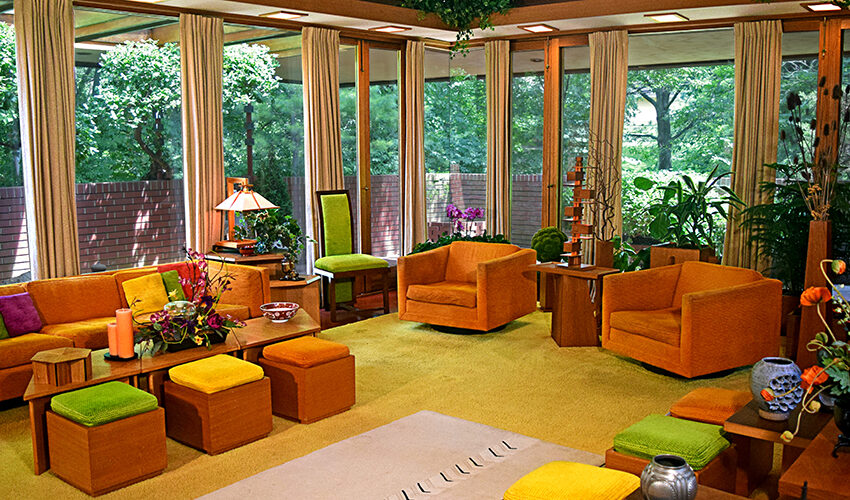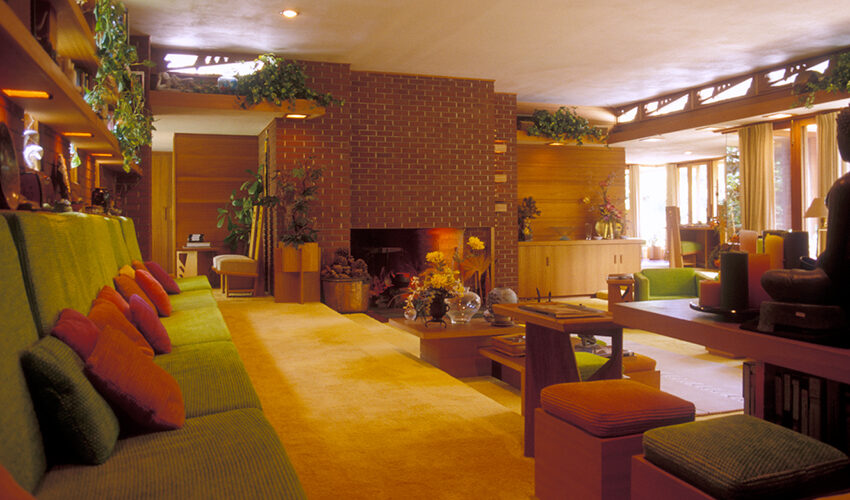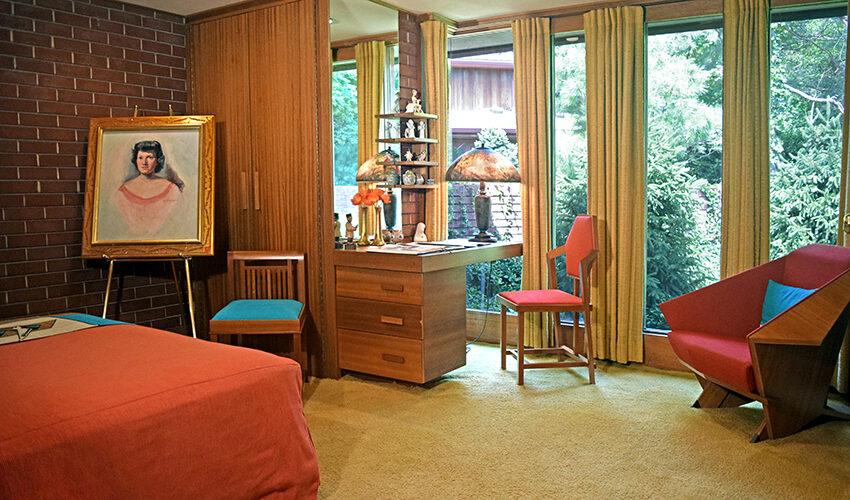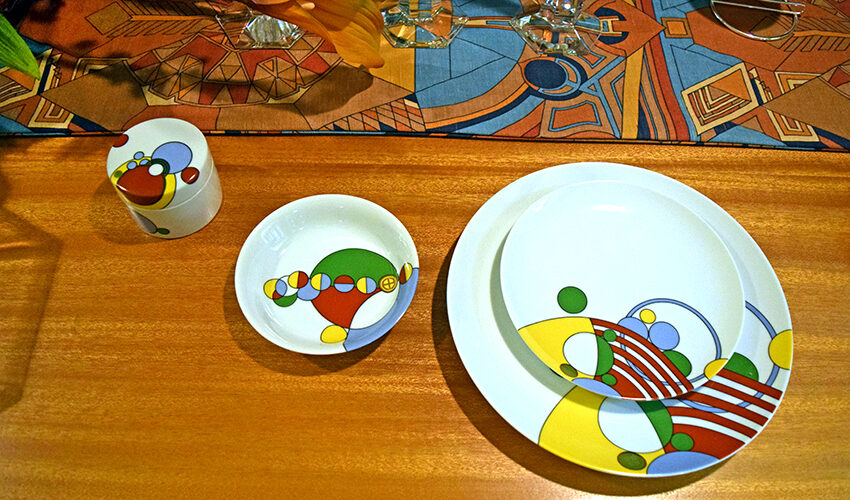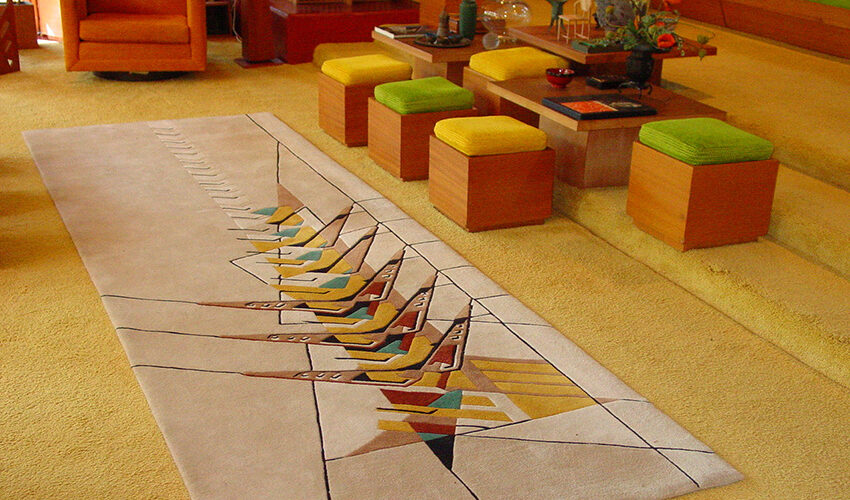Samara
Winged Seed
One of the most complete Frank Lloyd Wright homes in the United States, Samara offers national and international visitors rare immersive insight into Wright’s Usonian design philosophy.
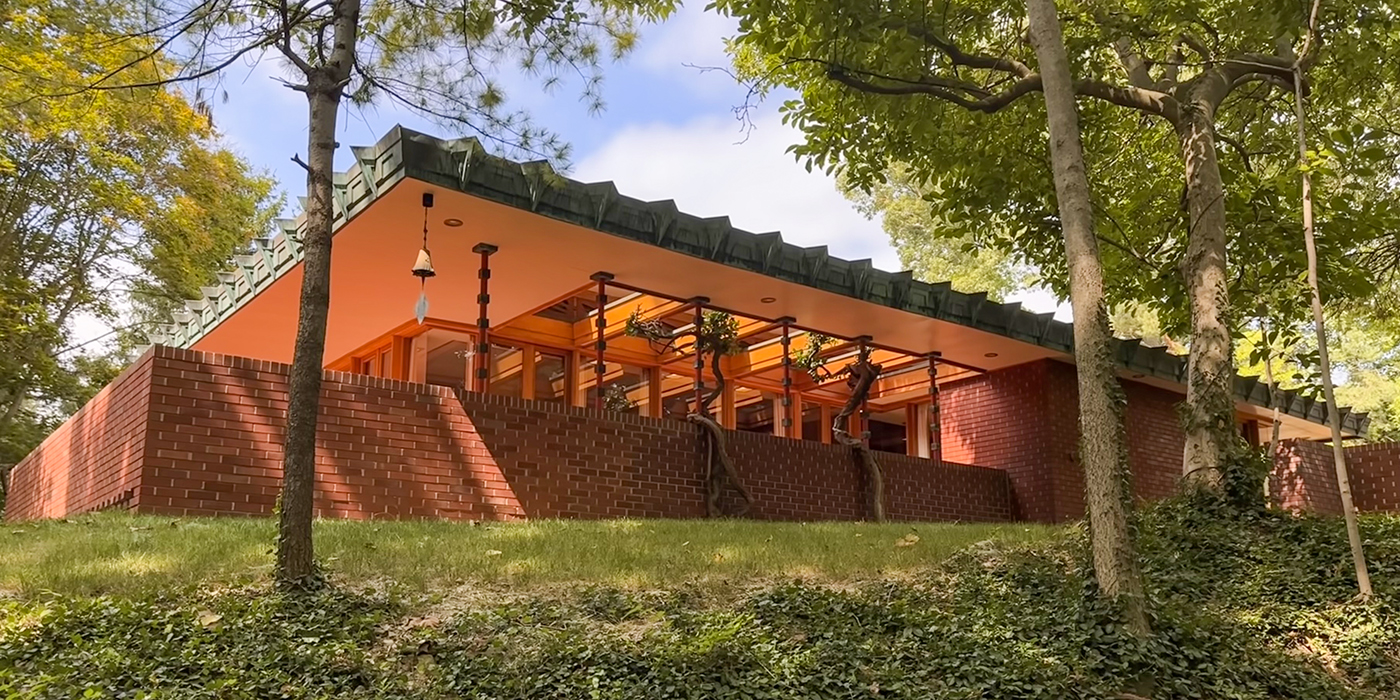
Years in the Making
The story of Samara is one of a young couple aspiring to a dream home designed by one of America’s most famous architects. Today, tucked into a quiet neighborhood in West Lafayette, that home is an exceptional example of Frank Lloyd Wright’s Usonian houses, which the architect defined as a sensible, modest, uniquely American dwellings.
In 1950, Dr. John and Catherine Christian reached out to Frank Lloyd Wright, who took their commission on the condition that the couple would fully implement his design, inside and out, even if it took years. During a visit to Taliesin, Catherine gave the famous architect a 28-page booklet, “What We Need for How We Live,” detailing the couple’s space needs and how they would use each room—from family gatherings to hosting faculty and students from nearby Purdue University, where Dr. Christian was a Bionucleonics professor.
The Christians worked with Wright over a period of five years (1951-1956) to develop detailed design and construction plans—from landscape and exterior details to specific interior furnishings including china, bed linens, and even the toilet paper holder.
Named for the winged seeds produced by the site’s evergreens, Samara features an abstract version of the winged seed design motif throughout the interior and exterior of the house. Today, Samara is notable as one of the most complete, fully implemented Wright-designed projects.
Indiana Landmarks led a years-long effort to get Samara designated a National Historic Landmark, a distinction it finally earned in 2015.
Today, Indiana Landmarks co-stewards Samara with the John E. Christian Family Memorial Trust. In 2023, Indiana Landmarks completed a comprehensive restoration project to address structural issues and update aging environmental systems to protect the home’s extensive collection of Wright-designed furnishings. The $2 million project was funded by a $500,000 Save America’s Treasures grant from the National Park Service, the John E. Christian Family Memorial Trust, Inc., and private donations.
Tours of Samara are offered on a regular basis, Wednesdays through Sundays, from spring until late autumn. Make your reservation below or by going to Eventbrite. For additional details, visit samara-house.org.
Frequently Asked Questions
Visiting the Site
Do I need to buy tickets in advance?
Yes. Unfortunately, we cannot welcome walk-in guests. You can make reservations at using the form above or at Eventbrite. Private groups may call 765-409-5522.
Do I need to print out my tickets?
No. We will have a list of ticket purchases, so you do not need to print your tickets.
How many people can be on a tour?
Each tour can accommodate up to 15 people. Private groups may call 765-409-5522 to accommodate larger group sizes.
Does Samara have a visitors’ center?
No. We will meet outside the house. Feel free to enjoy the gardens before the tour.
When and where do I check-in?
Check-in starts 20 min before your scheduled tour time. At the top of the brick driveway, look for a “Welcome” sign under the carport area. We will take your name through our check-in window.
Can I drive on the driveway?
No. All vehicles are restricted. Please walk up the brick driveway to access the house. If you have mobility issues, please call our office to arrange driveway access.
Does Samara have a gift shop?
No. If you would like to support Samara further, we appreciate donations to enhance our education and preservation programs.
What should I do if I’m late?
Please call our office at 765-409-5522 before your scheduled tour time. Tours will start promptly at the time indicated (Eastern Daylight Time) on your ticket. Do not attempt to open any of our historic doors or windows!
Where is Samara?
Look for a brick driveway at the dead-end of Woodland Avenue in West Lafayette, Indiana. Our teal-colored mailbox and gate are labeled 1301.
Can I see Samara from the road?
No. The house is hidden from street view by lush greenery. (Our neighbor’s house is completely visible to the road and has architectural elements reminiscent of Frank Lloyd Wright, but it is not Samara)
What time zone is Samara located within?
Eastern Daylight Time
Tour Expectations
Are we allowed to use the furniture?
Yes, but only in the living room. If you need accommodation for a seat in other rooms, please alert your guide prior to the tour.
Can we open the cabinets or handle artifacts?
Yes, but ask first! Please ask your tour guide before handling the cabinets or artifacts. We will facilitate and/or advise based on the best manner to preserve the historic site.
Is photography allowed?
Yes. Photography outside and inside the house is encouraged for personal, non-commercial use only. Tripods and drones are prohibited on regular tours. Photographers may schedule an appointment.
Are food and drinks allowed inside the house?
No. Please leave food and drinks outside or in your vehicle. Only water bottles may be permitted inside.
Are backpacks, purses, or bags allowed inside the house?
No. Please leave your personal belongings in your vehicle. The house has narrow hallways and small rooms that may be easily scratched by bags.
Is smoking or vaping allowed?
No. Smoking or vaping on the property is strictly prohibited.
What if it is raining?
When it’s raining, we adapt tours to cover indoor areas only. If you would like to tour the grounds on your own, please bring an umbrella.
Accommodations & Amenities
Are restrooms available in Samara?
No. We ask that you use a restroom before your visit to the property.
Does Samara have on-site parking?
No. However, public parking is available nearby along both sides of Woodland Avenue.
Can I drive on the driveway?
No. All vehicles are restricted. Please walk up the brick driveway to access the house. If you have mobility issues, please call our office to arrange driveway access.
Are pets allowed on the tour?
Certified service pets are always welcome. Please notify us ahead of your visit by calling 765-409-5522. Other pets are not permitted on tours. Also, please note that our property has limited shade, and pets should not be left in vehicles while guests are attending tours.
Is Samara wheelchair accessible?
No. We are working to make the house accessible, but currently there are three steps required to enter the house. If you have questions about accommodation and access, contact us at info@samara-house.org or 765-409-5522.
Are there many stairs during the tour?
No. Three stairsteps are required to enter the house. Inside, there are two areas with three stairsteps. If you need accommodation for a more accessible route inside, please alert your guide prior to the tour.
Are tours available in different languages?
No. Currently, tours are only offered in English. However, please refer to our blog for more information about the historic site.
Return & Transfer Policy
- Refund requests must be received at least 7 days before the tour date. Because tickets are purchased through Eventbrite, you will receive a partial refund as Eventbrite no longer refunds its fees.
- Transfer requests must be received at least 3 days before the tour date. Depending on availability, tickets may be transferred to a new date and time. There is no fee for ticket transfers.
- In the rare event that Samara must cancel a tour (e.g., natural disaster, medical emergency, or visitor safety is compromised), guests will be notified and offered a full refund.

